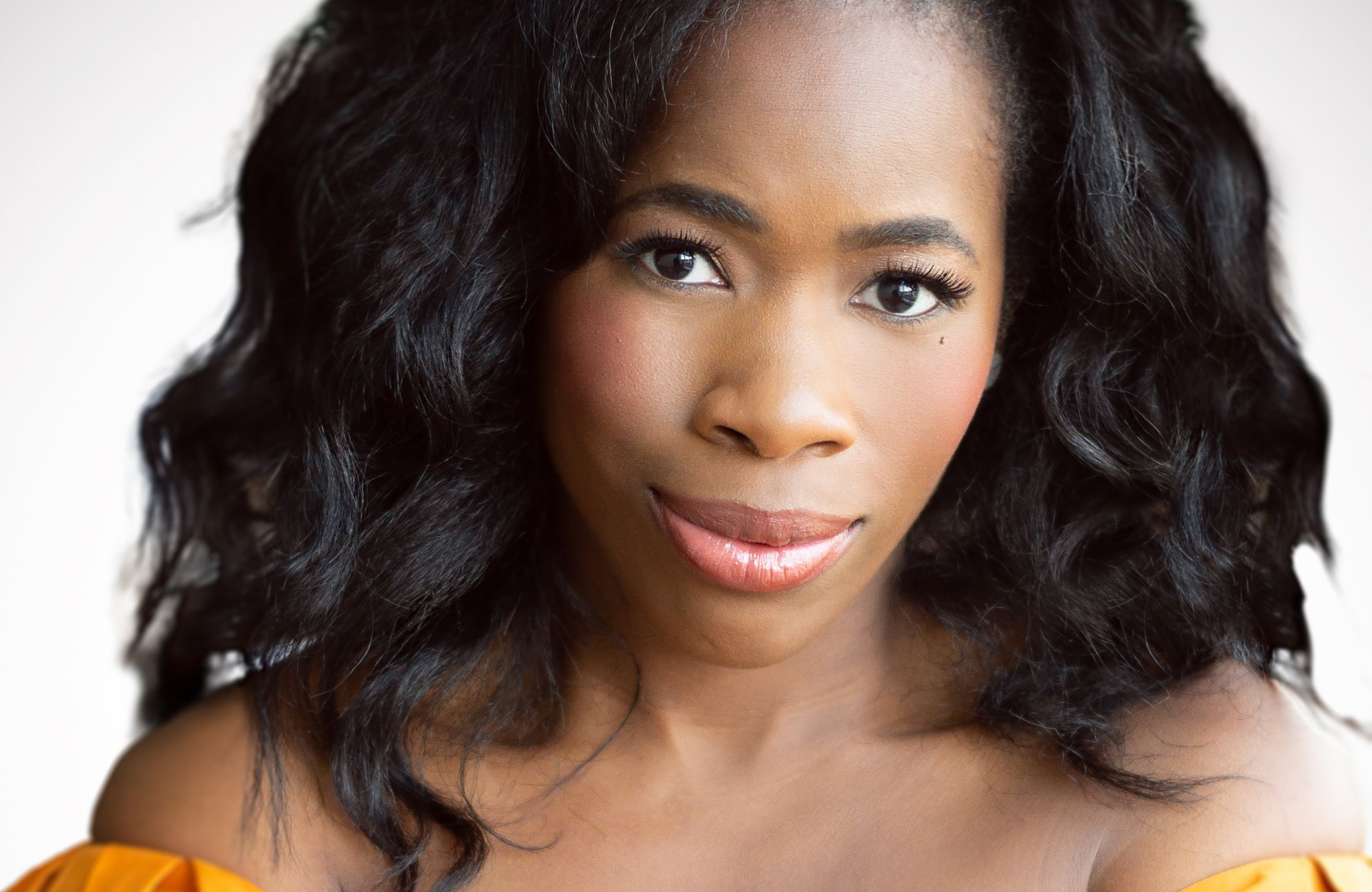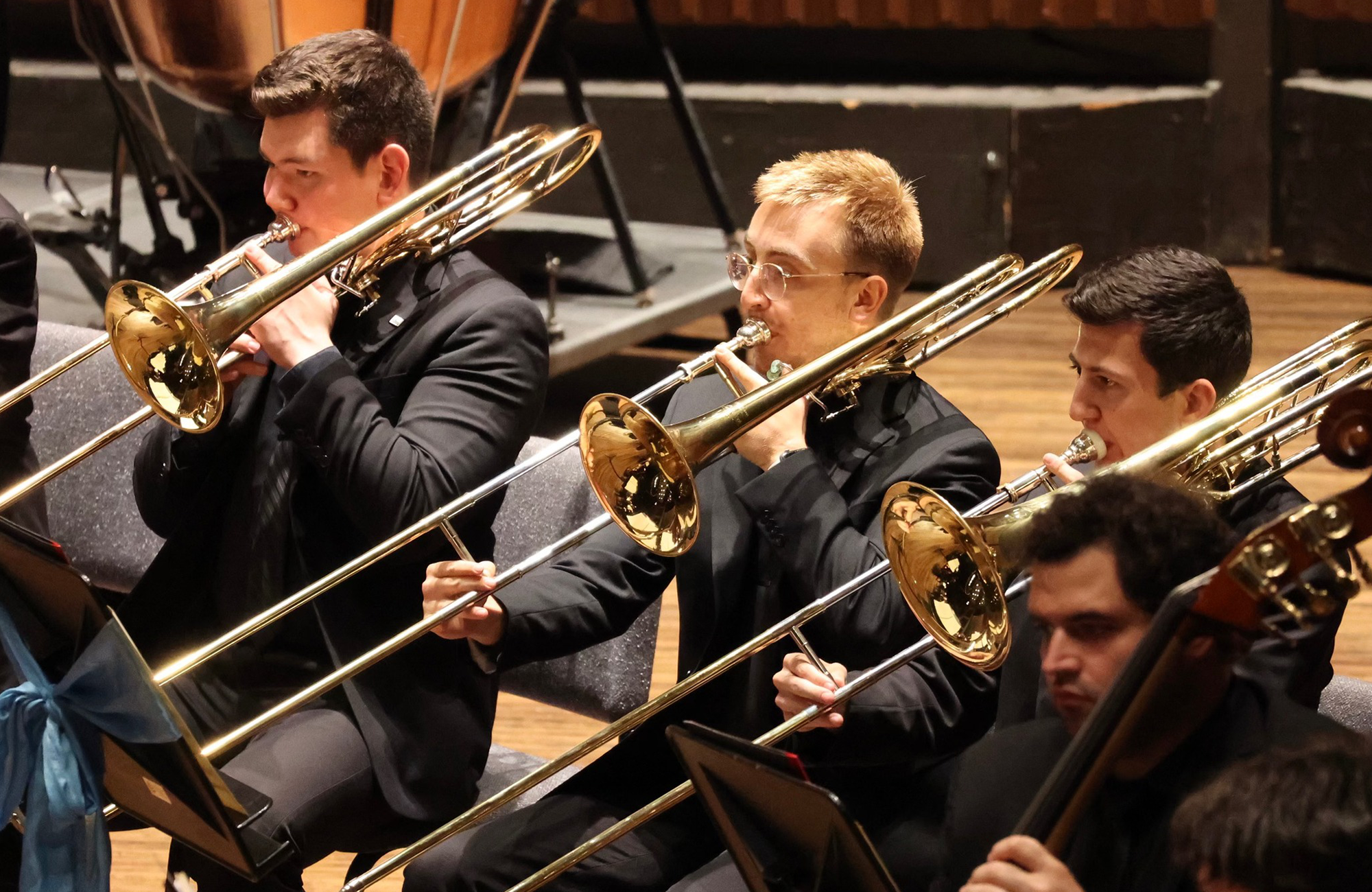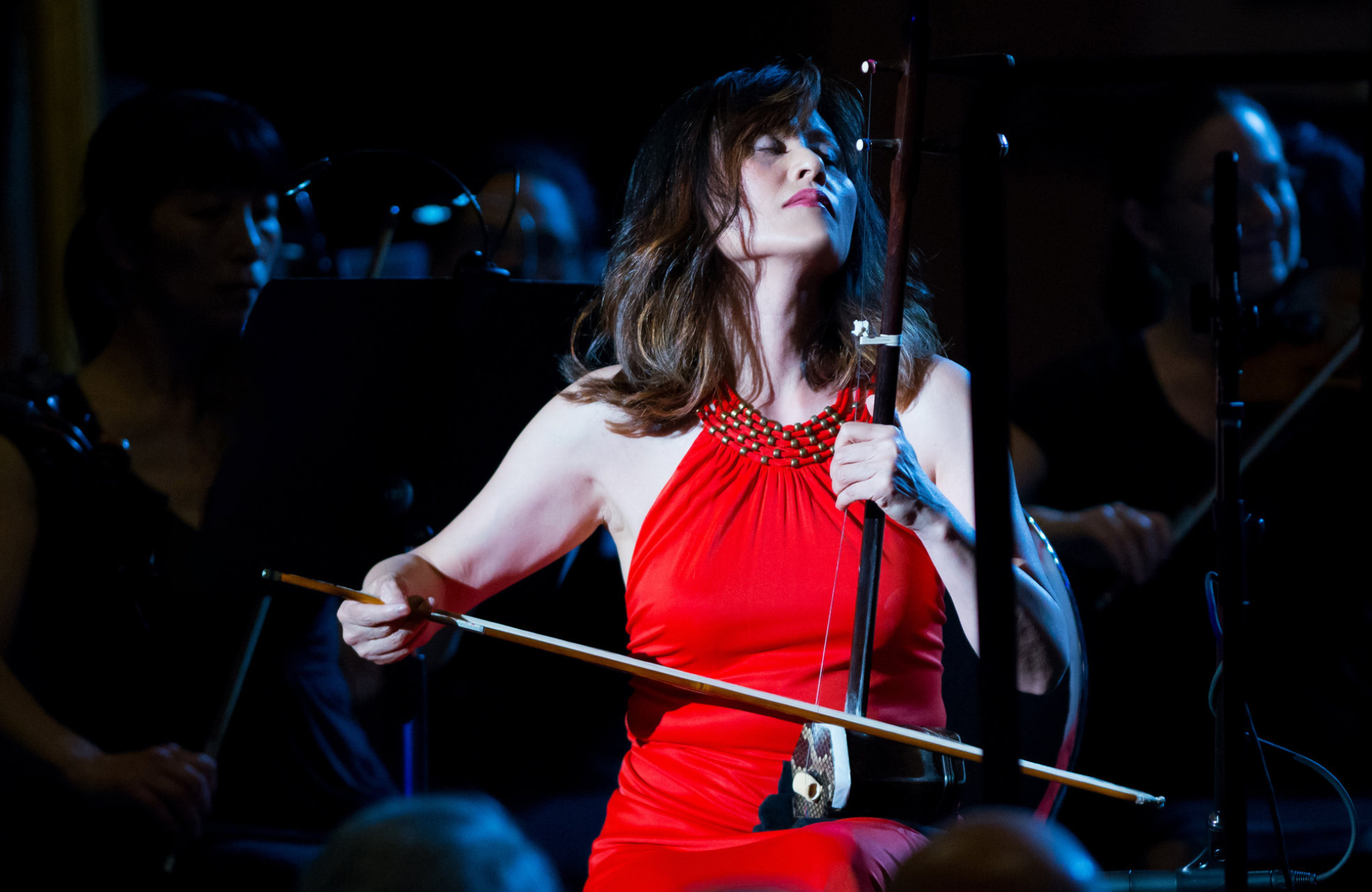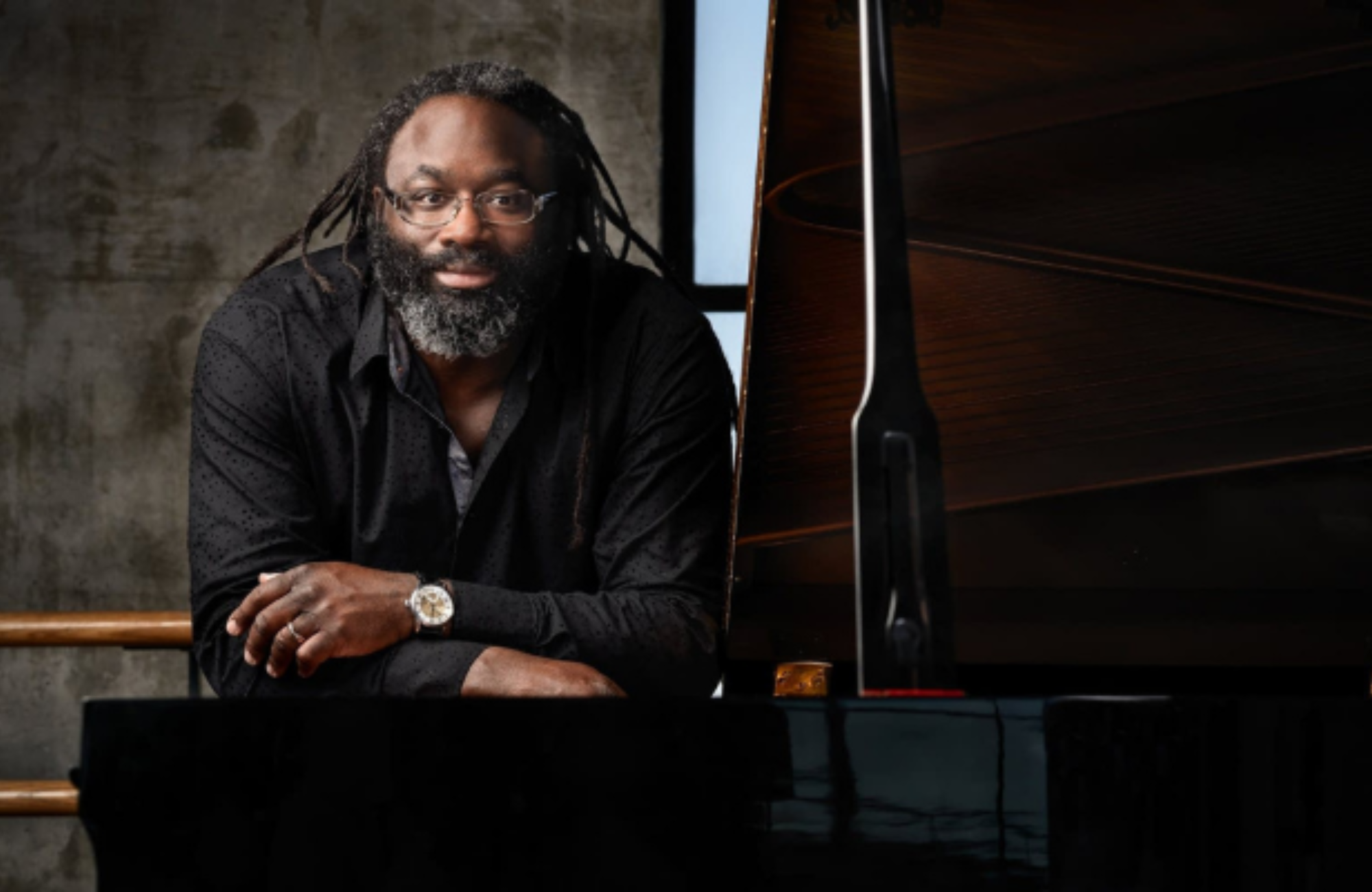Enjoy familiar opera choruses, orchestral interludes and arias from favorite composers like Verdi, Puccini, Donizetti, Rossini, and Wagner. Our award-winning cast includes soprano Jasmine Habersham, mezzo-soprano Laurel Semerdjian, tenor Miles Mykkanen, and baritone Jarrett Ott, along with the Syracuse University Oratorio Society and The Syracuse Orchestra!
PRE-PAID PARKING NOTE: The Harrison Street entrance and exit will be closed due to construction outside the building. All vehicles with a maximum clearance of 6’5″ are encouraged to use the upper Montgomery Street entrance. The Madison Street entrance and exit clearance is 6’5″ and should be used to exit the garage.
PROGRAM
ROSSINI: Overture to Il barbiere di Siviglia ![]()
VERDI: La donna e mobile from Rigoletto![]()
Miles Mykkanen, tenor
PUCCINI: O mio babbino caro from Gianni Schicchi ![]()
Jasmine Habersham, soprano
WAGNER: Prelude to Die Meistersinger ![]()
MOZART: La ci darem la mano from Don Giovanni ![]()
Laurel Semerdjian, mezzo-soprano
Jarrett Ott, baritone
MASCAGNI: Intermezzo from Cavalleria Rusticana![]()
ROSSINI: Largo al factotum from Il barbiere di Siviglia ![]()
Jarrett Ott, baritone
VERDI: Quartet from Rigoletto ![]()
Jasmine Habersham, soprano
Laurel Semerdjian, mezzo-soprano
Miles Mykkanen, tenor
Jarrett Ott, baritone
INTERMISSION
VERDI: Triumphal March from Aida ![]()
Syracuse University Oratorio Society
DONIZETTI: Una furtiva lagrima from L’elisir d’amore ![]()
Miles Mykkanen, tenor
VERDI: Va pensiero from Nabucco ![]()
VERDI: Caro nome from Rigoletto ![]()
Jasmine Habersham, soprano
MASSENET: Choisir! Et pourquoi? … O Rosalinde from Manon ![]()
Jarrett Ott, baritone
BIZET: Danse Bohème from Carmen![]()
BIZET: Habanera from Carmen ![]()
Laurel Semerdjian, mezzo-soprano
Syracuse University Oratorio Society
STRAUSS II: Overture to Die Fledermaus ![]()
|
Thanks to our sponsor for this performance! |
 |
|
Thanks to our media sponsor for this performance! |
 |
PROGRAM NOTES
If you’re already an opera fan, you won’t need an introduction to the music on tonight’s concert. The sixteen selections, taken from twelve canonical operas written during the “long nineteenth century” (that is, roughly from the French Revolution to the First World War), are all familiar chestnuts. And even if you think of yourself as a total newcomer to the world of opera, chances are you’ll know most of the tunes, which have saturated our sonic landscape in cartoons, commercials, movie soundtracks, whatever. Still, tonight’s program is more than a collection of great musical ...
If you’re already an opera fan, you won’t need an introduction to the music on tonight’s concert. The sixteen selections, taken from twelve canonical operas written during the “long nineteenth century” (that is, roughly from the French Revolution to the First World War), are all familiar chestnuts. And even if you think of yourself as a total newcomer to the world of opera, chances are you’ll know most of the tunes, which have saturated our sonic landscape in cartoons, commercials, movie soundtracks, whatever. Still, tonight’s program is more than a collection of great musical moments (although it is that). It will, we hope, also serve as an introduction to—or reminder of—what makes opera tick. We hope that those of you who are not already converted with find yourselves caught up in the art form.
Let’s prepare for the evening by taking on some key myths about opera:
Myth No. 1: Opera is elitist. When I was a youngster, the old Metropolitan Opera House had a separate entrance around the corner for people in cheaper seats, so that we wouldn’t pollute the main part of the hall (which, not coincidentally, had a strict dress code). How could anyone experience that socially inequitable architecture without believing that opera was an elitist art form? But the elitism of opera was not in the art form itself: it existed because opera, which had long been popular art, had been hijacked to function as a special preserve for the wealthy. In other words, opera itself is not arcane, effete, or aimed at the few. On the contrary, it’s immediate and powerful; and no special training is needed to experience its impact. (Nor, for that matter, is special dress: nowadays, you can get into the new Met wearing jeans and a T-shirt, entering the same space as everyone else.)
Thus, even without any musical instruction, you’re sure to be roused by the Triumphal March from Aida (1871) by Giuseppe Verdi (1813–1901). Subtler, but even more striking, is the chorus “Va pensiero” (“Fly, my thoughts, on Golden Wings”). This secretive hymn of faith and love of homeland is sung by the Hebrew slaves in Verdi’s biblical opera Nabucco (1842)—and it has taken on a life outside the work, having even been proposed as Italy’s national anthem. Nor should we minimize the acrobatic virtuosity that often adds an extra kick to operatic performances: As tenor Miles Mykkanen says, “Part of the fun of opera is doing these insane heavy-lifting pieces that are very difficult and could fall off the wire at any given moment. We hope it doesn’t—but that’s the thrill.”
Myth No. 2: Operas are tear-jerkers. Opera has roots in Greek tragedy, so it’s no surprise that many operas end in death. But far from all of them: nearly half of the operas represented tonight are comedies. If you’re looking for lighthearted uplift, not much can beat “Largo al factotum” (“Make Way for the Factotum”) from Il barbiere de Siviglia(The Barber of Seville) by Gioachino Rossini (1792–1868), which introduces the hyperkinetic trickster Figaro. “He’s so good at everything,” says baritone Jarrett Ott, “yet the master of none. Whenever someone hears this piece, from those first 4 measures, a smile arises. Even if a person’s dead asleep in the audience, you know they’re going to come right to life and be content at heart when that music starts.”
Myth No. 3: Opera is misogynist. In 1979, Catherine Clément wrote book called Opera, or the Undoing of Women, which argued that opera demeans women by consistently putting them in positions where “they suffer, they cry, they die.” It was extremely influential—largely because it highlighted the undeniable sorrows of many of opera’s women. But is that misogyny specific to opera? Let’s put it in context: well beyond opera, the long nineteenth century was, in general, unsympathetic to women—and we see many of the same sufferings in the novels, plays, paintings, and politics of the period, too. And while it would be hard to do a statistical comparison, it’s worth remembering that even though the most famous opera composers of the period were men (something not true in the world of literature), operas are filled with stirring examples of women’s strength, too. In Beethoven’s Fidelio, Leonora rescues her husband from prison; Puccini’s Tosca kills the head of the secret police; Brünnhilde, in Wagner’s Ring, lights the fire that brings down the gods. The title character of Carmen (1875) by Georges Bizet (1838–1875 shares that power. “Carmen is my absolute favorite role to sing ,” says mezzo-soprano Laurel Semerdjian. “She’s such a strong woman, and she’s so sure of herself. She demands attention, drawing you in the way other women would never do.” Carmen’s “Habanera” is her entrance aria—and like Figaro’s, it gives a striking picture of her personality. “Whether or not everything she does is, technically, morally right, you have to admire her for the way she lives her life freely. As she says, ‘I was born free, and I’ll die free. That’s what it is, and you can take it or leave it.’”
Myth No. 4: Opera is unrealistic. Opera is often dismissed for its outrageous, unrealistic stories. And if you consider the plot of something like Verdi’s Il Trovatore—with its combination of coincidence and mistaken identity that leads to accidental filicide and fratricide—the criticism seems valid, especially when you compare it to the plots of the great novels of the period, when realism was at its peak.
And yet: when it comes to realism, plot is not everything. Character is central, too. One of the major contributions of the realist novel was the development of techniques for revealing the minds of characters—indeed, for revealing things about their thoughts, anxieties, passions that they didn’t know themselves. In contrast, drama of the time—especially with the elimination of soliloquies because they were deemed too unrealistic—tended to stick to more external aspects of character. In this respect, nineteenth-century opera was actually closer to the novel than to drama. Not only did characters sing their thoughts directly; more important, the music elaborated on those psychological mechanisms in often remarkably subtle ways.
Take, as one example, the aria “Una furtiva lagrima” (“A Furtive Tear”) from L’elisir d’amore (The Elixir of Love) by Gaetano Donizetti (1797– 1848). Nemorino is a poor peasant in love with the rich landowner Adina. He’s hoodwinked into buying a fake love-potion—and after a series of comic-opera misadventures, he sees a tear in her eye that he interprets as a sign that she really loves him. Miles describes it as follows: “Nemorino is incredibly shy, and he’s living at a time where education didn’t exist for a guy like him. So he’s a simple thinker, and he hides a lot of emotions. So much of the opera is about him actually coming out of himself. This aria, with its incredibly beautiful melody, is our moment to see into him.” Yet it’s remarkably complex. Donizetti could easily have written an upbeat, joyful number—but he doesn’t. “The music is in minor and sounds sad. What does that mean? And how does that inform my performance?” There’s no way to sing it without probing Nemorino’s character. “It’s an aria I’ve sung for over 15 years, and every time I pick it up I ask, ‘What does this mean today? How is it changed since the last time I picked it up?’”
Opera is especially good at conveying moments of indecision and moments of change—as exemplified by Zerlina’s contribution to the duet “La ci darem la mano” (“There We’ll Give Each Other Our Hands”) from Don Giovanni by Wolfgang Amadeus Mozart (1756–1791).
As Laurel describes it, Zerlina, having just been married to the slightly coarse Masetto, notices a wedding crasher: “This beautiful man [none other than Don Giovanni/Don Juan] walks in with all this experience. He’s so charming, and even though she just got married.… I think she’s young and impressionable. From the get-go, she says, ‘I want to, but I cannot.’” An innocent who teeters, she’s nearly the polar opposite of the decisive and experienced Carmen.
As demonstrated by this duet—which contrasts Don Giovanni’s suave, seductive upper crust power with Zerlina’s inexperienced confusion—opera is also especially good at expressing the simultaneous conflicting reactions of multiple characters to a situation, something that novels of the time were hard pressed to do. An even more vivid example is represented the Quartet from Rigoletto (1851) by Giuseppe Verdi (1813–1901). More on this excerpt later.
Myth No. 5: Opera deals in stereotypes. True, if you watch enough operas, you’ll find yourself facing similar characters and. But the best operas uncover the uniqueness of those elements, not their commonalities.
Tonight, soprano Jasmine Habersham offers two arias: Lauretta’s “O mio babbino caro” (“O My Dear Papa”) from Gianni Schicchi by Giacomo Puccini [1858–1924]) and Gilda’s “Caro nome” (“Sweet Name”) from Rigoletto. Both of them, as she puts it, represent “young girls in love who would do anything to be with their partners.” Given that much information, you might legitimately expect a certain redundancy. As things work out musically, however, the characters show themselves to be entirely different.
Lauretta is singing to her father, asking for his support as she tries to marry Rinuccio—against the wishes of the families on both sides. In part, she’s describing her love—but in part, with the skill possessed by so many teenagers, she’s twisting her father around her little finger. One challenge for the singer is to work out the precise balance.
Gilda’s situation is far different. Unlike Lauretta, who knows herself, Gilda is still trying to find out who she is; and unlike Lauretta—who not only knows herself but also knows her boyfriend well—Gilda has fallen for the unscrupulous Duke, a man she doesn’t know and definitely shouldn’t trust, a man who courts her in disguise. As Jasmine says, we’ve learned that Gilda has an “undying wish to be like her mother, who loved her father despite his physical deformities and was always present for him”; and later, in the Quartet, despite her “aching cry” when she sees the Duke’s perfidy and “can’t believe what she is experiencing,” she nonetheless sacrifices herself for him, even though he has betrayed her. A lot of complexity here: “It’s a character,” says Jasmine, “that I’ve lived with. But I’m still discovering layers every single time I’ve done the role.”
Similarly, Jarrett plays two characters who seem, on the surface, fairly similar: Don Giovanni in the eponymous opera by Mozart, and Manon’s swaggering brother Lescaut in Massenet’s Manon. In both of the excerpts that we’re offering tonight, we see them as wolves looking for prey. But psychologically, they differ significantly—as the music makes clear, and as the singer has to convey in performance. Don Giovanni is a seducer who, Jarrett says, “always has to prove himself,” to “explain that he’s going to be faithful and give all the love he has.” (In fact, he’s got some reason for apprehension: despite his frequent boasting, he fails in every seduction attempt in the course of the opera.) Lescaut, in contrast, isn’t even pretending sincerity. He’s overtly negotiating; as he offers to give jewels to the various women in the crowd in exchange for kisses, he doesn’t expect anyone to believe that his interest is other than carnal. These two characters are not only different from each other—they’re both different, as well, from the womanizing and vicious Duke in Rigoletto, who, in his self-satisfied, snarky “La donna e mobile” (“Women are Fickle”), shows himself, in Miles’s words, to be the ultimate “alpha male.”
Myth No. 6: In opera, the orchestra is secondary. Mozart was as devoted to symphonic writing as he was to opera; the same is true for Prokofiev and Philip Glass. In the nineteenth century, there was more specialization. Beethoven completed a single opera, as did Liszt and Schumann; Brahms and Mahler didn’t write any. And you won’t find significant symphonic output from Rossini, Donizetti, Verdi, or Puccini. Add to this the existence of recitals where Luciano Pavarotti sings opera arias with piano accompaniment—not to mention the regularity of opera productions with reduced orchestrations—and it’s easy to conclude that the orchestra is a kind of supplement to opera performance, something that’s nice to have, but not really necessary. Tonight’s concert, in part, is intended to remind us all that many of the great opera composers were great orchestrators, too—as is especially clear in the five purely orchestral numbers that fill out the program, showing the radically different orchestral voices of Rossini, Richard Wagner (1813–1883), Johann Strauss II (1825–1899), Bizet, and Pietro Mascagni (1863–1945).
Peter J. Rabinowitz
Have any comments or questions? Please write to me at prabinowitz@SyracuseOrchestra.org
FEATURED ARTISTS
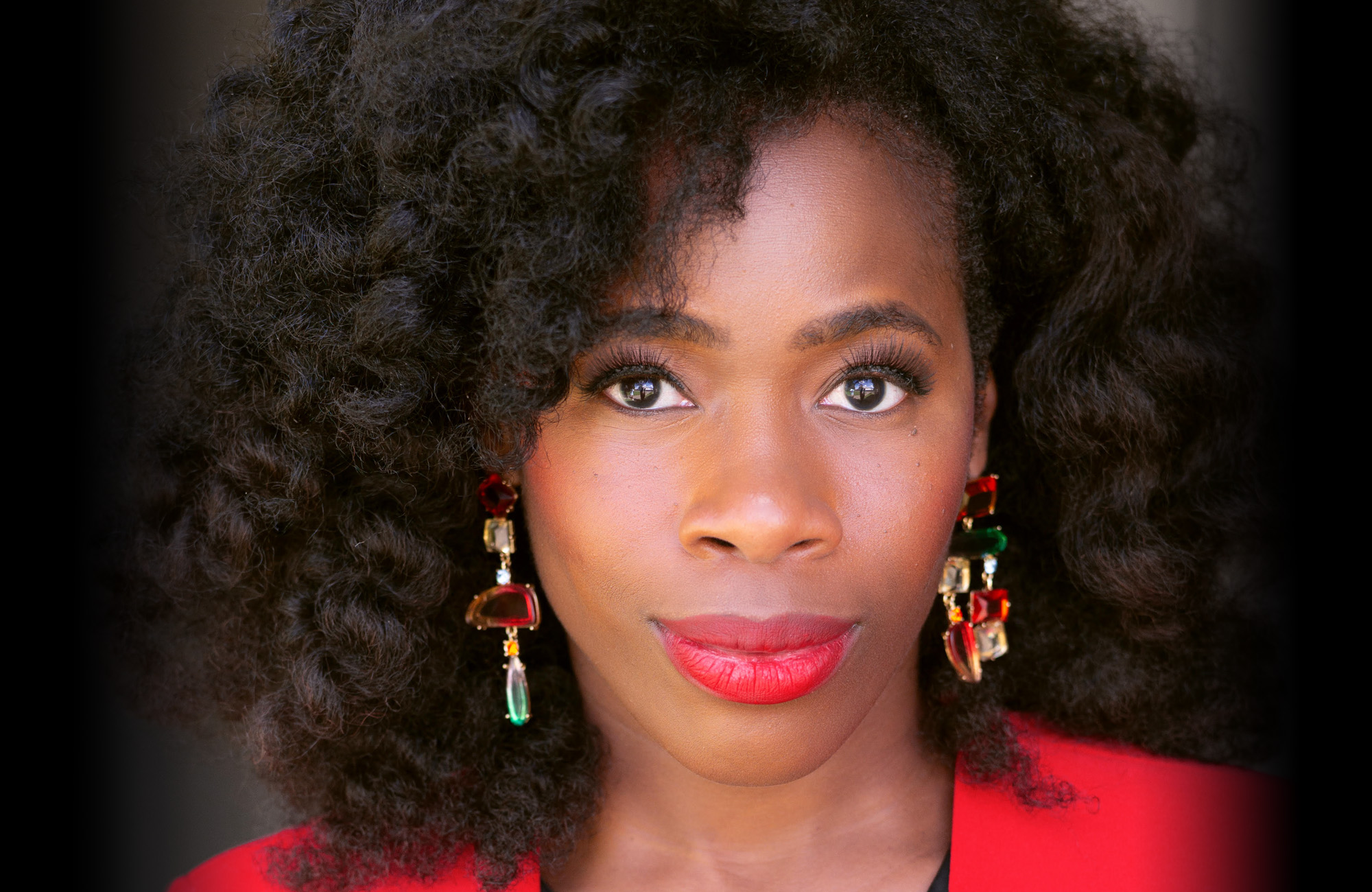
American soprano Jasmine Habersham is a versatile and dynamic performing artist whose voice has been hailed as “exquisite” by Broadway World and possessing a “well controlled, silvery tone [with] an alluring presence” by Opera Today. Last season, she returned to Minnesota Opera as Sarah Ruth in Edward Tulane, performed ...
American soprano Jasmine Habersham is a versatile and dynamic performing artist whose voice has been hailed as “exquisite” by Broadway World and possessing a “well controlled, silvery tone [with] an alluring presence” by Opera Today. Last season, she returned to Minnesota Opera as Sarah Ruth in Edward Tulane, performed with the Rochester Philharmonic, the Dallas Symphony, and sang Barber’s Knoxville: Summer of 1915 with the Mercer-Macon Symphony, débuted as Sophie in Werther with Houston Grand Opera, brought her celebrated Gilda in Rigoletto to Utah Opera, made her role début as Susanna in Le nozze di Figaro with Madison Opera, and returned to The Glimmerglass Festival as Almirena in Rinaldo. Habersham embarks on an exciting 2023-2024 season making her role début as Juliette in Roméo et Juliette with Opera San Jose. She then reprises her Gilda in Rigoletto in her return to Atlanta Opera, sings Frasquita in Carmen in her début with the Gran Teatre del Liceu in Barcelona, takes her Pamina in Die Zauberflöte to Nashville Opera, and joins Central City Opera as Mabel in The Pirates of Penzance. Additionally, she is in concert with multiple orchestras: the Fresno Philharmonic for Mahler’s 4th Symphony, the Baltimore Symphony for Carmina burana, and Symphoria for a concert of operatic excerpts.
Recent seasons have included many exciting company and role débuts for Ms. Habersham. She returned to Atlanta Opera for her role début as Cleopatra in Giulio Cesare, made her company début with Opera North (UK) as Gilda in Rigoletto, appeared as The Dew Fairy in Hansel and Gretel with Rochester Philharmonic Orchestra, returned to Madison Opera for her role début Euridice in Orpheus in the Underworld, and joined The Glimmerglass Festival as Mimi in Tenor Overboard and Mary in Holy Ground.
Additionally, she has performed in Opera in the Park Online with Madison Opera, performed as a Company Player with The Atlanta Opera as The Girl in Der Kaiser von Atlantis and Micaëla in Threepenny Carmen, made her début with Seattle Opera as Zerlina in Don Giovanni, and sang Nannetta in Falstaff with Berkshire Opera.
Other notable engagements include Pip in Moby Dick with Opera San Jose and Utah Opera, Katie Jackson in the world premiere of Joel Puckett’s The Fix with Minnesota Opera, Clara in Porgy and Bess with the Baltimore Symphony Orchestra, Adina in L’elisir d’amore with the Phoenicia International Festival of the Voice, Pamina in The Magic Flute with Opera Theatre of St. Louis: Opera on the Go, Papagena in Die Zauberflöte with Cincinnati Opera, Yum-Yum in the The Mikado with Kentucky Opera, Esther in Intimate Apparel with Cincinnati Opera Fusion, and Clara in Porgy and Bess with Utah Festival Opera. She has also performed the roles of Papagena in The Magic Flute and an Apparition in Macbeth at The Glimmerglass Festival.
Ms. Habersham has performed as a featured soloist in numerous concert productions including Szymanowski’s Stabat Mater, Schubert’s Mass in G, Bach’s B Minor Mass, Handel’s Messiah, and Duke Ellington’s Concert of Sacred Music. A finalist in the Lotte Lenya Competition, Jasmine is well-versed as a crossover artist in opera and musical theatre. She has performed the roles Edith in The Pirates of Penzance with The Atlanta Opera, Susannah in The Musical: Tintypes with Janiec Opera Company, and Pearl in Morning Star with Cincinnati Opera Fusion. She has won numerous awards including 2nd Place in the 2018 Southeast Regional Metropolitan Opera National Council Auditions, The Strauss Award in the National Orpheus Competition, the John Alexander Memorial Award from University of Cincinnati College-Conservatory of Music, and the Young Artist Guild Award from Central City Opera.
Ms. Habersham has participated in several esteemed young artists programs including with The
Glimmerglass Festival, Central City Opera, Kentucky Opera, and the Brevard Music Center. She received her Bachelor of Music degree in Vocal Performance at Shorter College and her Master of Music and Artist Diploma from the University
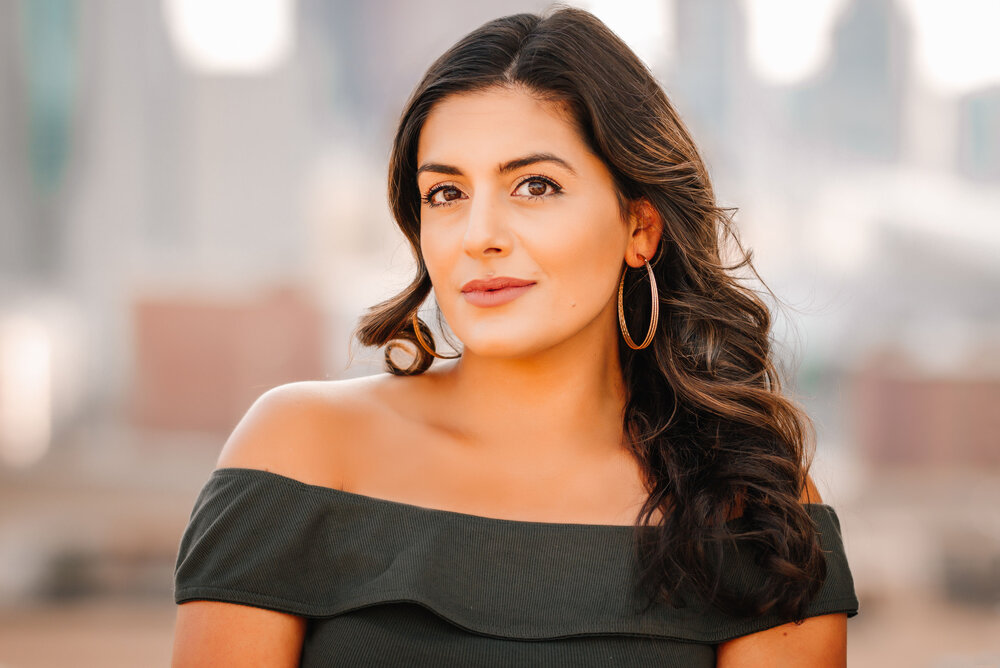
Laurel Semerdjian, an American mezzo-soprano of Armenian descent, has recently been hailed as “a dramatic and musical tour de force” (Pittsburgh Tribune) for her portrayal of Asakir in Pittsburgh Opera’s production of Mohammed Fairouz’s Sumeida’s Song. Her voice has been praised for its “guttural low notes” (...
Laurel Semerdjian, an American mezzo-soprano of Armenian descent, has recently been hailed as “a dramatic and musical tour de force” (Pittsburgh Tribune) for her portrayal of Asakir in Pittsburgh Opera’s production of Mohammed Fairouz’s Sumeida’s Song. Her voice has been praised for its “guttural low notes” (Pittsburgh Post Gazette) and “appealing weight, intensity and flexibility”.
In January 2020, Ms. Semerdjian returned to Pittsburgh Opera, singing the role of Bradamante in Handel’s Alcina and in the spring of 2020, Ms. Semerdjian made a company debut with Florentine Opera, singing the title role in Le Tragédie de Carmen, and was slated to return to Resonance Works to debut the role of Maddalena in Rigoletto and Symphony Tacoma for their Mozart Requiem (COVID19). During the 20-21 season, Ms. Semerdjian was slated to make a role debut with Young Victorian Theater Company as Ruth in The Pirates of Penzance, a return to Opera Southwest as Geneviève in Pelléas et Mélisande and was to join the Cape Symphony as the mezzo soloist in Beethoven’s Ninth Symphony (COVID19- postponed to 2022). In the spring of 2021, Ms. Semerdjian returned to Sarasota Opera in the role of Marianna in their production of Il Signor Bruschino and this summer, she will make her Missouri Symphony debut in their Opera Gala. In the fall of 2021, Ms. Semerdjian will be featured in a filmed project entitled Heroes which is co-produced by Resonance Works and Decameron Opera Coalition and will also join Symphony Tacoma as the mezzo soloist in Messiah and Mozart’s Requiem, Opera Southwest for their NYE gala, and will make her Madison Opera debut as Public Opinion in Orpheus in the Underworld.
During the 2018–2019 season, Ms. Semerdjian returned to Pittsburgh Opera as Suzuki in Madama Butterfly, sang the title role of Benazir Bhutto in a workshop of Mohammed Fairouz’s Bhutto with Pittsburgh Opera / Beth Morrison Projects, joined Symphony Tacoma as the alto soloist in Handel’s Messiah, rejoined Tacoma Opera for her debut in the title role of The Rape of Lucretia, and performed with Syracuse’s Symphoria as mezzo soloist in Haydn’s Mass in Time of War and Beethoven’s Symphony No. 9. In the summer of 2019, Ms. Semerdjian made company debuts as Flora in La traviata with Summer Garden Opera and Dorabella in Così fan tutte with Inland Northwest Opera. In the fall of 2019, Ms. Semerdjian returned to Pittsburgh Symphony in the Bruckner Te Deum and made her Opera Southwest debut in Bottesini’s rarely performed Alì Babà.
During the 2017–2018 season, Ms. Semerdjian returned to both Sarasota Opera, as Flora in La traviata, and Syracuse Opera, as Suzuki in Madama Butterfly. She made company debuts with St. Petersburg Opera (Florida) as Dritte Dame in Die Zauberflöte, with Pittsburgh’s Resonance Works as Ježibaba in Rusalka, and with Washington Concert Opera debut as guest soloist in their Opera’s Greatest Heroines gala concert. She also performed both Beethoven’s Symphony No. 9 and Haydn’s Mass in Time of War with Washington DC’s Cathedral Choral Society at the Washington National Cathedral.
Ms. Semerdjian made several significant role debuts throughout the 2016–2017 season. In her return to Bellevue City Opera she performed her first Dorabella in Così fan tutte, and in October 2016 she made her Syracuse Opera debut as Tisbe in La Cenerentola. In early 2017, Ms. Semerdjian returned to Sarasota Opera for her initial performances of the role of Suzuki in Madama Butterfly. She also made her Westmoreland Symphony Orchestra debut with her first performances of Beethoven’s Symphony No. 9.
Ms. Semerdjian also fulfilled two seasons as a Resident Artist with Pittsburgh Opera (2014–2016). Her responsibilities included performances of the roles of Mother Goose in The Rake’s Progress, Meg in Little Women, Gertrude Stein in Ricky Ian Gordon’s opera 27, Fenena in Nabucco, Emilia in Otello, Eduige in Rodelinda, Asakir in Sumeida’s Song, and covering the title role of Carmen. In the summer of 2015 she performed the role of Cherubino in Bellevue City Opera’s inaugural production of Le nozze di Figaro, and in the summer of 2014 she performed the role of Mercédès in Carmen as a Vocal Fellow at Music Academy of the West, under the guidance of legendary mezzo-soprano Marilyn Horne. As an Apprentice Artist with Sarasota Opera, she covered the role of Inez in the company’s 2014 production of Il trovatore.
During the 2012–2013 season Ms. Semerdjian was an Emerging Artist with the Dallas Opera. She performed the role of Veronica in Bizet’s Dr. Miracle in outreach performances in local schools as well as at the Winspear Opera House with the Dallas Opera Orchestra. She also covered the role of Sonia in the Dallas Opera’s production of Argento’s The Aspern Papers.
Ms. Semerdjian holds a Master of Music in Vocal Performance from the University of North Texas and a Bachelors of Music in Vocal Arts with a minor in Music Industry from the University of Southern California.
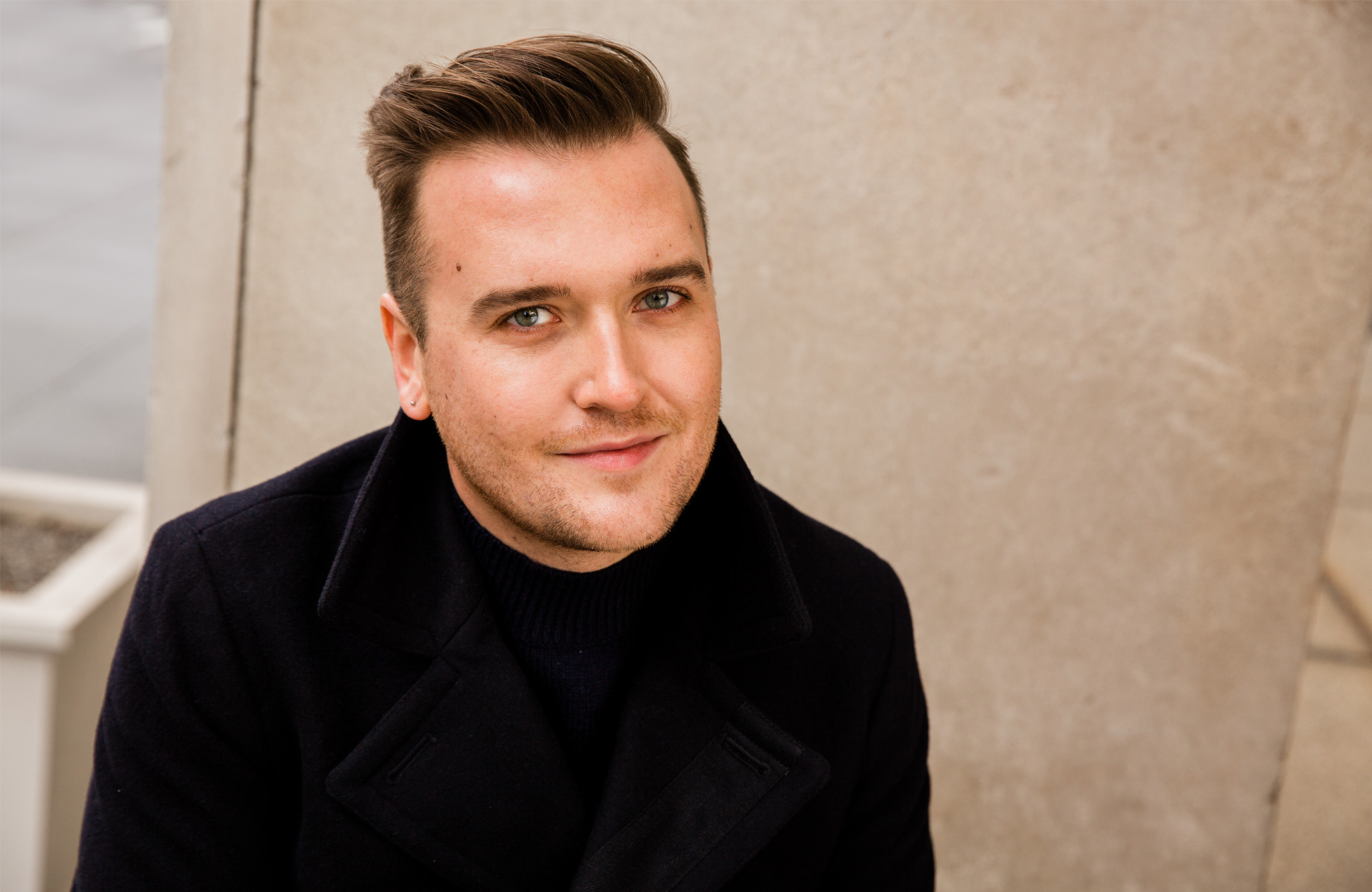
A winner of the 2019 Metropolitan Opera National Council Auditions, Miles Mykkanen garners recognition and praise on the world’s concert and operatic stages for his “focused, full-voiced tenor” (New York Times). Of his performance in the title role of Albert Herring, Opera ...
A winner of the 2019 Metropolitan Opera National Council Auditions, Miles Mykkanen garners recognition and praise on the world’s concert and operatic stages for his “focused, full-voiced tenor” (New York Times). Of his performance in the title role of Albert Herring, Opera News reported, “Miles Mykkanen displayed a lovely lyric voice with an appealing honeyed sweetness in the timbre, which he employed with intelligence and humor.”
Miles Mykkanen’s 2023-24 season includes a debut at the Royal Opera House, Covent Garden as Steuermann in Der Fliegende Holländer in a production by Tim Albery led by Henrik Nánási, a role debut as Ernesto in Don Pasquale with Opera Omaha under the baton of Gary Thor Wedow, as well as a San Francisco Opera debut in the North American premiere of the gripping one-act drama of Kaija Saariaho and Sofi Oksanen, Innocence, directed by Simon Stone and conducted by Saariaho specialist Clément Mao-Takacs. Other performances of the season include Carmina Burana with the Atlanta Symphony Orchestra and Krzysztof Urbański, Mozart’s Requiem with the Oregon Symphony and Music Director David Danzmayr, and Handel’s Messiah with the Atlanta Symphony Orchestra led by Norman Mackenzie and with the Kansas City Symphony conducted by Aram Demirjian.
Last season, Miles Mykkanen gave three prominent role debuts: Steuermann in Der fliegende Holländer in a return engagement with the Canadian Opera Company, the title role of Albert Herring in his debut at Chicago Opera Theater, and his first Fenton in Falstaff for a company debut at the Staatsoper Hamburg. Other operatic engagements included the tenor’s return to the Metropolitan Opera to cover Tamino in the company’s new production by Simon McBurney of Die Zauberflöte and the title role of Candide in performances with the Opéra de Lausanne. Concert engagements were anchored by multiple performances of Handel’s Messiah at University Musical Society, Ann Arbor and with the Atlanta and New Jersey Symphonies.
Highlights of recent seasons include Metropolitan Opera productions of Boris Godunov conducted by Sebastian Weigle, Die Meistersinger von Nürnberg led by Sir Antonio Pappano, Ariadne auf Naxos with Marek Janowski, and Wozzeck with Music Director Yannick Nézet-Séguin, a debut at the Festival d’Aix en Provence in L’incoronazione di Poppea in a new production by Ted Huffman conducted by Leonardo García Alarcón, his Minnesota Opera debut in the Pulitzer Prize-winning opera Silent Night by Kevin Puts and Mark Campbell, A Midsummer Night’s Dream at Opera Philadelphia in Robert Carsen’s production conducted by Corrado Rovaris, and Ariadne auf Naxos with Franz Welser-Möst and The Cleveland Orchestra. One of his signature roles, Candide has been performed at Arizona Opera, Palm Beach Opera, and at the Ravinia and Tanglewood festivals in concert with The Knights.
The tenor’s vibrant concert schedule has included performances of Bruckner’s Te Deum with Manfred Honeck and the Pittsburgh Symphony, the world premiere of Mohammed Fairouz’ Another Time with Leonard Slatkin and the Detroit Symphony Orchestra, Mozart Requiem with David Danzmayr and the San Antonio Symphony, a
New York Philharmonic debut with excerpts from West Side Story conducted by Leonard Slatkin, and Handel’s Messiahwith the symphonies of Atlanta, Indianapolis, and New Jersey, with the National Symphony Orchestra at The Kennedy Center, and at the University of Michigan’s Hill Auditorium under the auspices of the University Musical Society.
Miles Mykkanen has spent numerous summers at the Marlboro Music Festival where his performances have spanned from art songs of Brahms and Britten to chamber music of Brett Dean with distinguished guest artists Mitsuko Uchida, Malcolm Martineau, Roger Vignoles, and many others. He frequently appears with Steven Blier, Michael Barrett, and the New York Festival of Song and also has collaborated with Juilliard415, the Mostly Mozart Festival Orchestra, New World Symphony, Philadelphia Chamber Music Society, and Chamber Music Society of Lincoln Center.
The tenor is a 2019 Sara Tucker Study Grant winner, youngARTS Gold winner and the recipient of prizes from the Sullivan Foundation, Toulmin Foundation, Novick Career Advancement Grant, and Juilliard’s Joseph W. Polisi Award. Miles Mykkanen is a graduate of the Interlochen Arts Academy and earned his Artist Diploma in Opera Studies, along with his Bachelor’s and Master’s degrees, from The Juilliard School under the tutelage of Cynthia Hoffmann.

American baritone Jarrett Ott, one of Opera News’ twenty-five “Rising Stars,” and called “a man who is seemingly incapable of an unmusical phrase,” is enjoying an international career at the age of 36. In the 23/24 season, Mr. Ott will sing the title role in a world-premiere work with ...
American baritone Jarrett Ott, one of Opera News’ twenty-five “Rising Stars,” and called “a man who is seemingly incapable of an unmusical phrase,” is enjoying an international career at the age of 36. In the 23/24 season, Mr. Ott will sing the title role in a world-premiere work with Festival d’Aix-en-Provence, the title role in Pascal Dusapin’s Macbeth Underworld with Opéra Comique, Colonel Álvaro Gómez in a new production by Calixto Bieito’s of The Exterminating Angel by Thomas Adès with Opéra national de Paris, and Don Pedro de Alvarado in Purcell’s The Indian Queen with Teodor Currentzis and the Salzburg Festival. In concert, Jarrett joins the Colorado Symphony and Oregon Bach Festival for Vaughan-Williams’ A Sea Symphony, the US Naval Academy in Annapolis for Messiah and Symphoria in Syracuse, NY for an evening of opera favorites.
In the 2022-23 season, Jarrett Ott made his debut at the Gran Teatre del Liceu as Lescaut in Manon, the Opéra Comique as Jan Nyman in Missy Mazzoli’s Breaking the Waves, Dandini in La Cenerentola with Staatstheater Stuttgart, the prisoner in David Lang’s prisoner of the state with Malmö Opera and Barcelona Symphony Orchestra, and Maximilian in Candide with the Hamburg Symphoniker at the Lausitz Festival. In the US, he performed Conte in Le nozze di Figaro with Pittsburgh Opera, reprised the role of John Seward for a performance and recording of The Lord of Cries with Odyssey Opera, and joined colleagues for the inaugural Sag Harbor Song Festival on Long Island.
In the 2021-22 season, Mr. Ott made debuted at Opéra national de Paris as Oreste in Iphigenie en Tauride, the Bayerische Staatsoper for a debut as Dandini in La Cenerentola, Aeneas in Dido and Aeneas with The Grand Théâtre de Luxembourg, conducted by Emmauelle Haïm, and performed Sharpless in Madama Butterfly and Faust in Schumann’s Scenes from Goethe’s Faust with Staatstheater Stuttgart. He was also a featured soloist with Emmauelle Haïm and Le Concert d’Astrée for a gala event at the Théâtre des Champs-Elysées in Paris, which was
later released on Warner Classics/Erato.
On the operatic stage, recent work has included W.P. Inman in the East Coast premiere of Cold Mountain as well as Papageno in Die Zauberflöte with Opera Philadelphia, Guglielmo in Così fan tutte, Harlekin in Ariadne auf Naxos, Maximilian in Candide and Masetto in Don Giovanni with The Santa Fe Opera, Figaro with Lyric Opera Kansas City and Dayton Opera, Jupiter in Offenbach’s Orpheus in the Underworld with New Orleans Opera, Curly in Oklahoma! with Glimmerglass Festival, Zurga in The Pearl Fishers with North Carolina Opera, and Charlie in Jake Heggie’s Three Decembers with Opera Memphis. He made his European operatic debut at Deutsche Oper Berlin singing the role of the Angel in Andrea Scartazzini’s world premiere work Edward II, directed by Christof Loy. Other role debuts included The Count in Strauss’ Capriccio, a co-production with Opera Philadelphia and Curtis Opera Theatre and Kenneth Fuchs’ Falling Man at Symphony Space and the 9/11 Memorial Museum in New York City. A former member of the Staatstheater Stuttgart Ensemble, he has performed Conte, Marcello in La bohème, Figaro in Il barbiere di Siviglia, Dandini, Oreste in Iphigénie en Tauride and Chou En-lai in Nixon in China.
On the concert stage, Jarrett Ott has performed the title role in David Lang’s world-premiere prisoner of the state with Jaap van Zweden and the New York Philharmonic, Stephano with Susanna Mälkki in Sibelius’ The Tempest and in Weimar Nightfall: The Seven Deadly Sins, conducted by Esa-Pekka Salonen, both at the Los Angeles Philharmonic. He has performed Orff’s Carmina Burana with the Seattle Symphony and Colorado Springs Philharmonic, Brahms’ Requiem with the Columbus Symphony and a holiday concert with the Lexington Philharmonic. A favorite of the New York Choral Society, he has appeared as soloist in Stanford’s Songs of the Fleet, Handel’s Israel in Egypt, both at Carnegie Hall, and The Hyland Mass, a world-premiere at St. Patrick’s Cathedral. He made his European concert debut with the Ensemble Intercontemporain in Paris, performing pieces by Vito Zuraj and Bach, conducted by Matthias Pintscher and also embarked on a European tour with Perm Opera, Teodor Currentzis and MusicAeterna as Don Pedro de Alvorado in concerts of Purcell’s Indian Queen, with stops in Geneva, Köln, Bremen and Dortmund.
A native of Pen Argyl, Pennsylvania, Jarrett Ott is based in New York and received his master’s degree at the Curtis Institute of Music.
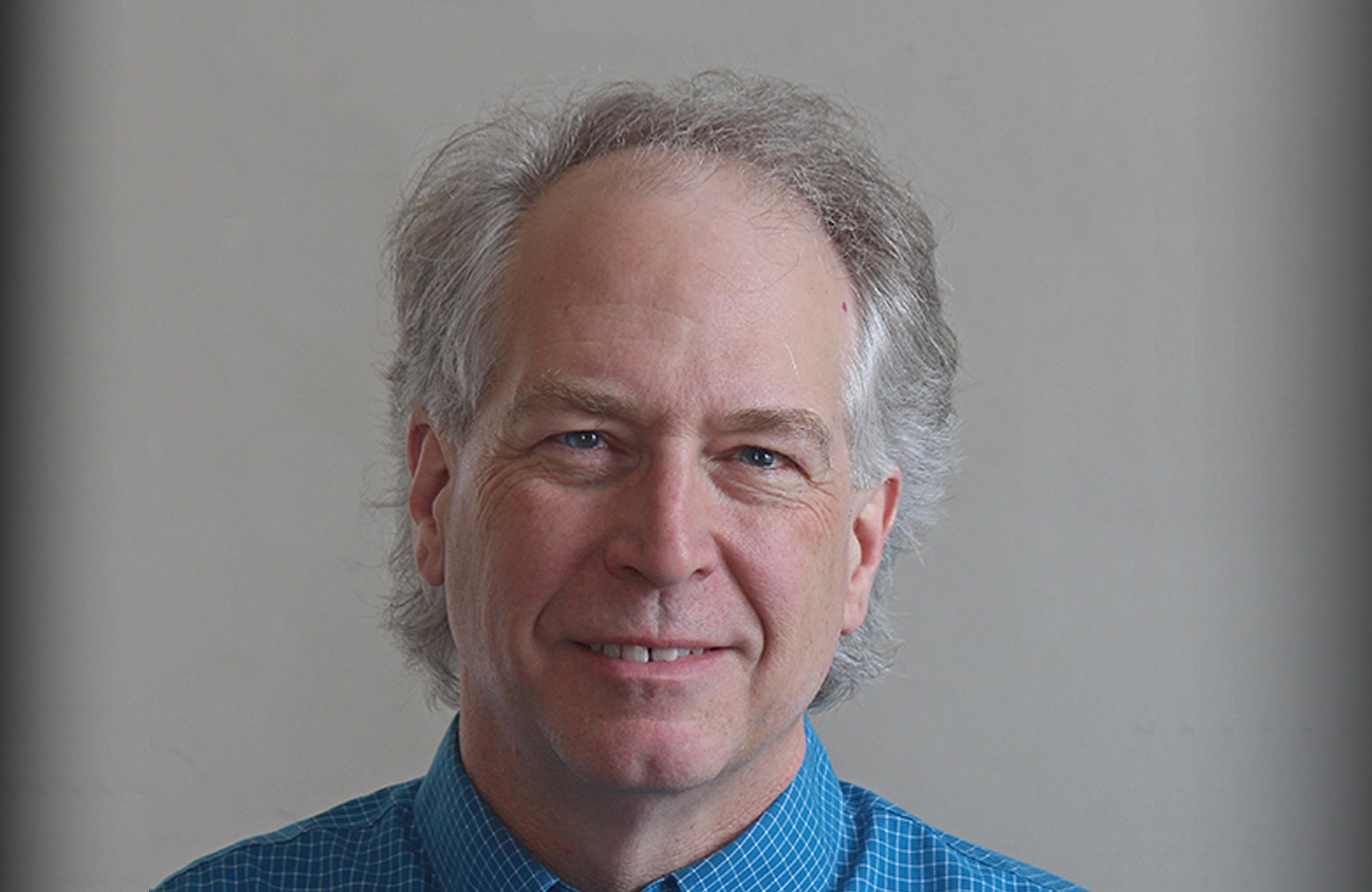
A versatile performer, Steven Stull has lived and performed in Ithaca since 1986 and appears regularly in the area with the Cayuga Chamber Orchestra, the Society for New Music, Arts at Grace, and Triphammer Arts. He has been a soloist in sixty performances with Symphoria and Syracuse Symphony including nine ...
A versatile performer, Steven Stull has lived and performed in Ithaca since 1986 and appears regularly in the area with the Cayuga Chamber Orchestra, the Society for New Music, Arts at Grace, and Triphammer Arts. He has been a soloist in sixty performances with Symphoria and Syracuse Symphony including nine productions with the Syracuse Opera. A frequent performer with the Rochester Philharmonic, he performed with RPO as Sherlock Holmes in 2019 and in seven concerts in 2018, narrating and singing a variety of pieces including Prokofiev’s Peter and the Wolf, Copland’s A Lincoln Portrait, and the Dr. Seuss stories, The Sneetches and Gerald McBoing Boing. Mr. Stull has been a soloist in nearly eighty performances with the West Virginia Symphony Orchestra and can be heard in their recordings Home for the Holidays and Tales from the West Virginia Hills. His other recordings include Boyz in the Wood with the Cayuga Chamber Orchestra, The Pulse of an Irishman, Opera Cowpokes, and Christmas from the Heart of New York. Steven has appeared with Glimmerglass Opera, Tri-Cities Opera, Artpark, Brooklyn Academy of Music, Kyrgyz State Opera, Opera Theatre of Pittsburgh, Oswego Opera, Anchorage Festival of Music, Buffalo Philharmonic Orchestra, Opera Ithaca, Erie Philharmonic, Erie Chamber Orchestra, Jacksonville Symphony, and Fredonia Bach and Beyond Festival. Recent and upcoming performances include soloist in Handel’s Messiah, Bonhoeffer in Hugh McElyea’s Tenebrae: The Passion of Dietrich Bonhoeffer, Aeneas in Dido and Aeneas, and Frank Baum in the new opera Pushed Aside by Persis Vehar. A graduate of the Eastman School of Music and Oberlin College Conservatory, Steven is also an actor, producer, director, composer, painter and photographer. Since 1990 Steven and choreographer Jeanne Goddard have presented an eclectic series of music and dance performances on the CRS Growers organic vegetable farm overlooking Cayuga Lake in Ithaca, NY. His numerous recordings are available from operacowpokes.com
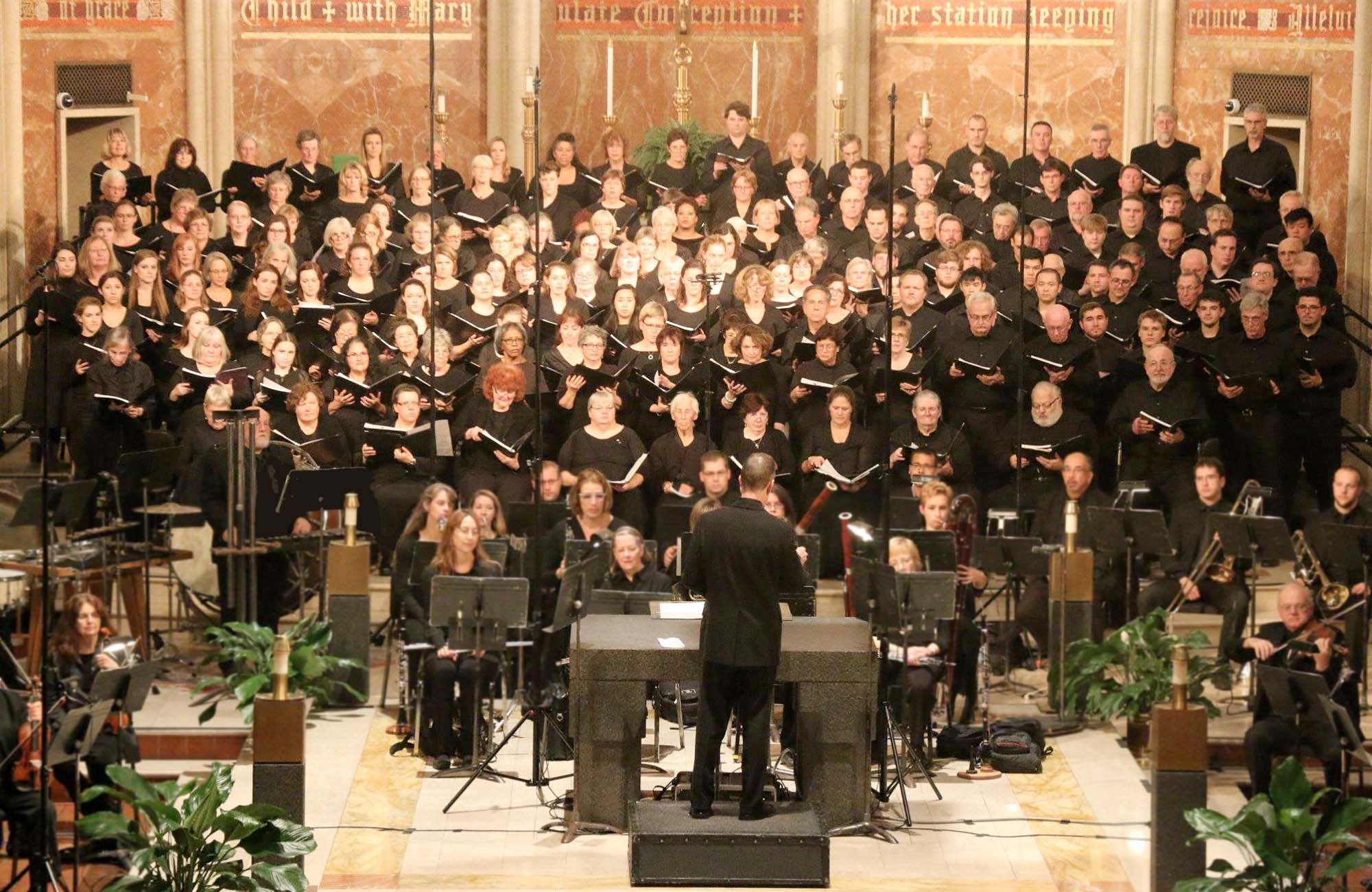
Founded in 1975, the Syracuse University Oratorio Society is a large chorus comprised of Syracuse University students and community members that regularly performs choral-orchestral masterworks with the Syracuse Orchestra. The Oratorio Society is directed by Dr. Wendy Moy.
Founded in 1975, the Syracuse University Oratorio Society is a large chorus comprised of Syracuse University students and community members that regularly performs choral-orchestral masterworks with the Syracuse Orchestra. The Oratorio Society is directed by Dr. Wendy Moy.

Described as bringing an “artisan storyteller’s sensitivity… shaping passages with clarity and power via beautifully sculpted dynamics… revealing orchestral character not seen or heard before” (Arts Knoxville) Lawrence Loh enjoys a dynamic career as a conductor of orchestras all over the world.
After an extensive two ...
Described as bringing an “artisan storyteller’s sensitivity… shaping passages with clarity and power via beautifully sculpted dynamics… revealing orchestral character not seen or heard before” (Arts Knoxville) Lawrence Loh enjoys a dynamic career as a conductor of orchestras all over the world.
After an extensive two year search, Lawrence Loh was recently named Music Director of the Waco Symphony Orchestra beginning in the Spring of 2024. Since 2015, he has served as Music Director of The Syracuse Orchestra (formerly called Symphoria), the successor to the Syracuse Symphony Orchestra. “The connection between the organization and its audience is one of the qualities that’s come to define Syracuse’s symphony as it wraps up its 10th season, a milestone that might have seemed impossible at the beginning,” (Syracuse.com) The Syracuse Orchestra and Lawrence Loh show that it is possible to create a “new, more sustainable artistic institution from the ground up.”
Appointed Assistant Conductor of the Pittsburgh Symphony in 2005, Mr Loh was quickly promoted to Associate and Resident Conductor within the first three years of working with the PSO. Always a favorite among Pittsburgh audiences, Loh returns frequently to his adopted city to conduct the PSO in a variety of concerts. Mr. Loh previously served as Music Director of the West Virginia Symphony Orchestra, Music Director of the Northeastern Pennsylvania Philharmonic, Artistic Director and Principal Conductor of the Syracuse Opera, Music Director of the Pittsburgh Youth Symphony Orchestra, Associate Conductor of the Dallas Symphony Orchestra, Associate Conductor of the Colorado Symphony Orchestra and Music Director of the Denver Young Artists Orchestra.
Mr. Loh’s recent guest conducting engagements include the San Francisco Symphony, Dallas Symphony, North Carolina Symphony, Baltimore Symphony, Sarasota Orchestra, Florida Orchestra, Pensacola Symphony, Atlanta Symphony, National Symphony, Detroit Symphony, San Diego Symphony, Seattle Symphony, National Symphony (D.C.), Utah Symphony, Rochester Philharmonic, Indianapolis Symphony, Calgary Philharmonic, Buffalo Philharmonic, Albany Symphony and the Cathedral Choral Society at the Washington National Cathedral. His summer appearances include the festivals of Grant Park, Boston University Tanglewood Institute, Tanglewood with the Boston Pops, Chautauqua, Sun Valley, Shippensburg, Bravo Vail Valley, the Kinhaven Music School and the Performing Arts Institute (PA).
As a self-described “Star Wars geek” and film music enthusiast, Loh has conducted numerous sold-out John Williams and film music tribute concerts. Part of his appeal is his ability to serve as both host and conductor. “It is his enthusiasm for Williams’ music and the films for which it was written that is Loh’s great strength in this program. A fan’s enthusiasm drives his performances in broad strokes and details and fills his speaking to the audience with irresistible appeal. He used no cue cards. One felt he could speak at filibuster length on Williams’ music.” (Pittsburgh Tribune)
Mr Loh has assisted John Williams on multiple occasions and has worked with a wide range of pops artists from Chris Botti and Ann Hampton Callaway to Jason Alexander and Idina Menzel. As one of the most requested conductors for conducting Films in Concert, Loh has led Black Panther, Star Wars (Episodes 4-6), Jaws, Nightmare Before Christmas, Jurassic Park, Casablanca, The Wizard of Oz and Singin’ in the Rain, among other film productions.
Lawrence Loh received his Artist Diploma in Orchestral Conducting from Yale, his Masters in Choral Conducting from Indiana University and his Bachelor of Arts from the University of Rochester. Lawrence Loh was born in southern California of Korean parentage and raised in Carlisle, Pennsylvania. He and his wife Jennifer have a son, Charlie, and a daughter, Hilary. Follow him on instagram @conductorlarryloh or Facebook at @lawrencelohconductor or visit his website, www.lawrenceloh.com


